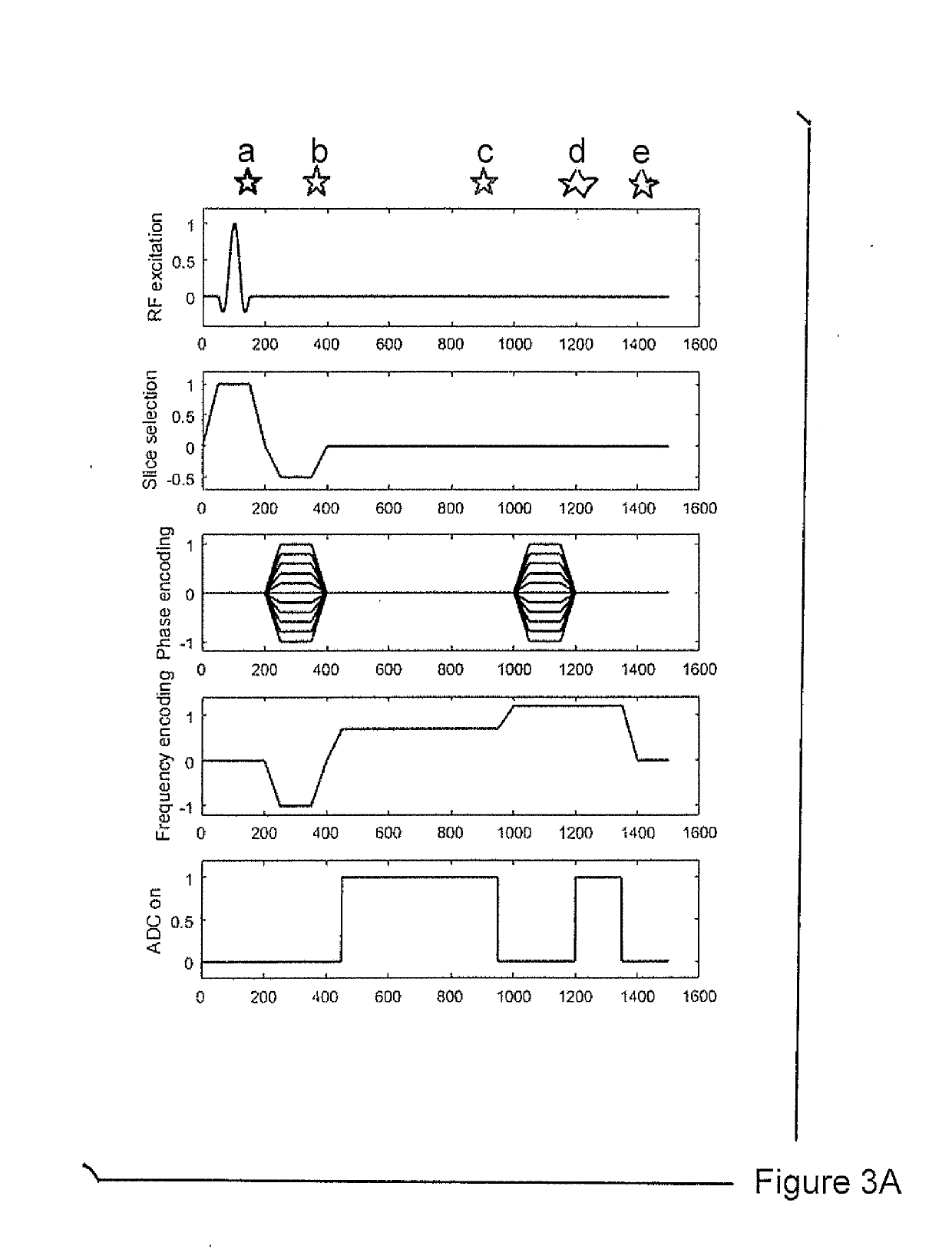Magnetic resonance imaging
a magnetic resonance imaging and image data technology, applied in the field of magnetic resonance image data acquisition apparatus, can solve the problems of increasing patient discomfort, many image data acquisition scans having to be repeated, and up to 60% of clinical neurological examinations can typically be adversely affected
- Summary
- Abstract
- Description
- Claims
- Application Information
AI Technical Summary
Benefits of technology
Problems solved by technology
Method used
Image
Examples
Embodiment Construction
[0065]Referring to FIG. 1 there is schematically illustrated a plurality of excitation sequences (left-hand side of FIG. 1) generated by an MRI imaging system for defining a trajectory (right-hand side of FIG. 1) in the frequency-domain (k-space).
[0066]A first excitation sequence comprises a radio-frequency (RF) pulse which initiates magnetisation of an object which is the subject of the MRI scan. This occurs at an initial time point “a” indicated in FIG. 1. Concurrently with this initial time point, a slice-select magnetic field gradient (Gz) is applied in order to select a slice of the scanned object at a particular position along the spatial z-axis of the 3-D coordinate system of the MRI apparatus performing the scan. As is common practice in the field, this slice-select magnetic field gradient comprises an initial pulse period of positive polarity immediately followed by a brief pulse period of opposite polarity. Subsequently, no magnetic field gradient is applied along the z-ax...
PUM
 Login to View More
Login to View More Abstract
Description
Claims
Application Information
 Login to View More
Login to View More - R&D
- Intellectual Property
- Life Sciences
- Materials
- Tech Scout
- Unparalleled Data Quality
- Higher Quality Content
- 60% Fewer Hallucinations
Browse by: Latest US Patents, China's latest patents, Technical Efficacy Thesaurus, Application Domain, Technology Topic, Popular Technical Reports.
© 2025 PatSnap. All rights reserved.Legal|Privacy policy|Modern Slavery Act Transparency Statement|Sitemap|About US| Contact US: help@patsnap.com



